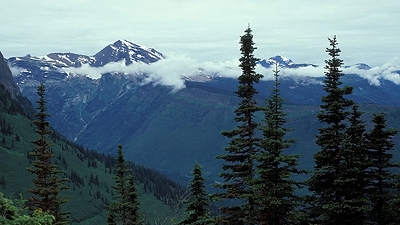Forests are often described as the "lungs of the Earth," but oxygen generation is just one function they perform in their complex relationship with the atmosphere and people. They also help regulate air quality, soak up rainwater and recycle it, prevent soil erosion, and maintain the climate by storing large quantities of carbon.
Despite this multi-tasking, the value of forests is only measured in a country’s national accounts by the timber and fuel they provide. The total contribution of forests to other sectors of the economy is either invisible or undervalued.
Governments around the globe are now recognizing that their natural assets – forests, water, land, minerals and energy sources – contribute vast wealth to their economies, and they are committing to undertake natural capital accounting as a way of factoring nature’s services into economic decision-making, where it traditionally had gone unaccounted for in measures like GDP. Government statisticians also have a new tool from the UN Statistical Commission to help them calculate the total stock of natural assets in their countries and how these contribute to overall wealth.
A growing group of first-movers
More than 35 government ministers, vice-ministers and senior officials of finance, development and environment came together for a high-level ministerial dialogue on natural capital accounting on April 18 on the sidelines of the World Bank-IMF Spring Meetings. They are part of a larger group of more than 60 countries, the "first-movers" on natural capital accounting, who are sharing technical know-how and the set-up of institutions needed to move the process forward.
“Natural resources are the base upon which all wealth is built,” said World Bank Vice President for Sustainable Development Rachel Kyte, who chaired the meeting. “Countries recognize that they cannot make difficult choices on development or achieve green and inclusive growth without the data to show how economic growth depends on natural assets. Natural capital accounting provides the data needed at every cabinet table to make these choices.”
The use of natural capital accounts is gaining momentum. Botswana, Colombia, Costa Rica, Denmark, Finland, France, Gabon, Namibia, Kenya, Philippines, and Rwanda are just a few of the countries leading the growing global community of practice on uses of natural capital accounting.
In many parts of the world, natural capital accounting is already being used as a crucial tool in making smart economic decisions:
- Kenya developed forest accounts to understand the contribution that forests make to GDP.
- Canada, the Netherlands, and Norway undertake annual energy accounts to plan for economic growth while reducing carbon emissions.
- Botswana has compiled water accounts to help plan for the country’s economic diversification and growth. They show that 45 percent of the country’s water currently goes to agriculture, which provides just 2 percent in return to GDP.
- Australia compiles water accounts to help it manage this scarce resource more effectively.
In the Philippines, the government has committed to taking stock of mineral assets before continuing business as usual.“We are not issuing new mining contracts until we have a full account of our stocks on minerals,” said Ramon Paje, secretary of the Department of Environment and Natural Resources.
Rwanda is set to launch the second phase of its Economic Development and Poverty Reduction Strategy, and natural capital accounting is part of it. Namibia wanted to know the contribution of natural resources to its economy and has started work on wildlife and fishery accounts.


